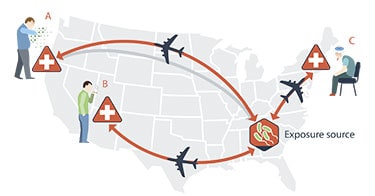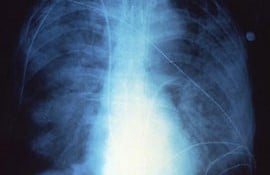Diagnosis, Treatment, and Complications
Infection with Legionella bacteria can present as two different types of illness: Legionnaires’ disease and Pontiac fever. The two illnesses can be diagnosed with similar tests, but are treated differently.
Legionnaires’ Disease
Diagnosis
People with Legionnaires’ disease have a serious type of pneumonia (lung infection), which can be confirmed by chest x-ray. Doctors typically use two preferred types of tests to see if a patient’s pneumonia is caused by Legionella:

- Urine test
- Laboratory test that involves taking a sample of sputum (phlegm) or washing from the lung
Treatment and Complications
Legionnaires’ disease requires treatment with antibiotics and most cases of this illness can be treated successfully. Healthy people usually get better after being sick with Legionnaires’ disease, but they often need care in the hospital.
Possible complications of Legionnaires’ disease include
- Lung failure
- Death
About 1 out of every 10 people who gets sick with Legionnaires’ disease will die due to complications from their illness.1 For those who get Legionnaires’ disease during a stay in a healthcare facility, about 1 out of every 4 will die.2
Pontiac Fever
Diagnosis
Doctors can use a urine or blood test to see if someone has Pontiac fever. However, a negative test doesn’t rule out that someone may have it (this is called a false negative). Doctors most often diagnose Pontiac fever when there are other known cases of Legionella infection that lab tests confirmed. These patients with confirmed Legionnaires’ disease or Pontiac fever may have been exposed to Legionella at the same time or place as other patients with a suspected illness.
Treatment and Complications
Pontiac fever goes away without requiring treatment.
Footnotes
- Dooling KL, Toews KA, Hicks LA, et al. Active Bacterial Core surveillance for legionellosis—United States, 2011–2013. MMWR Morb Mortal Wkly Rep. 2015;64(42):1190–3.
- Soda E, Barskey A, Shah P, et al. Vital Signs: Health care-associated Legionnaires’ disease surveillance data from 20 states and a large metropolitan area — United States, 2015. MMWR Morb Mortal Wkly Rep. 2017; 66(22);584–9.



